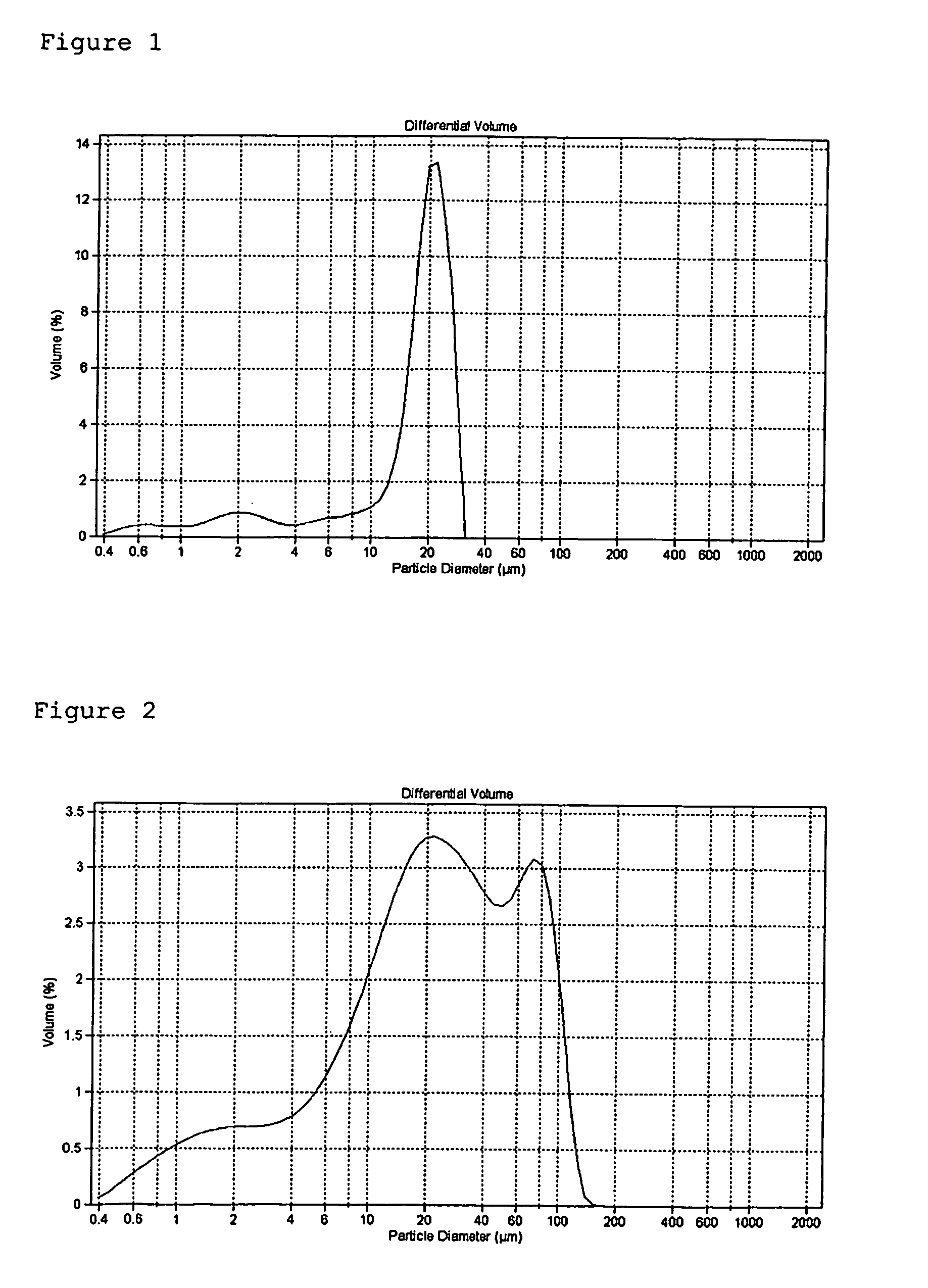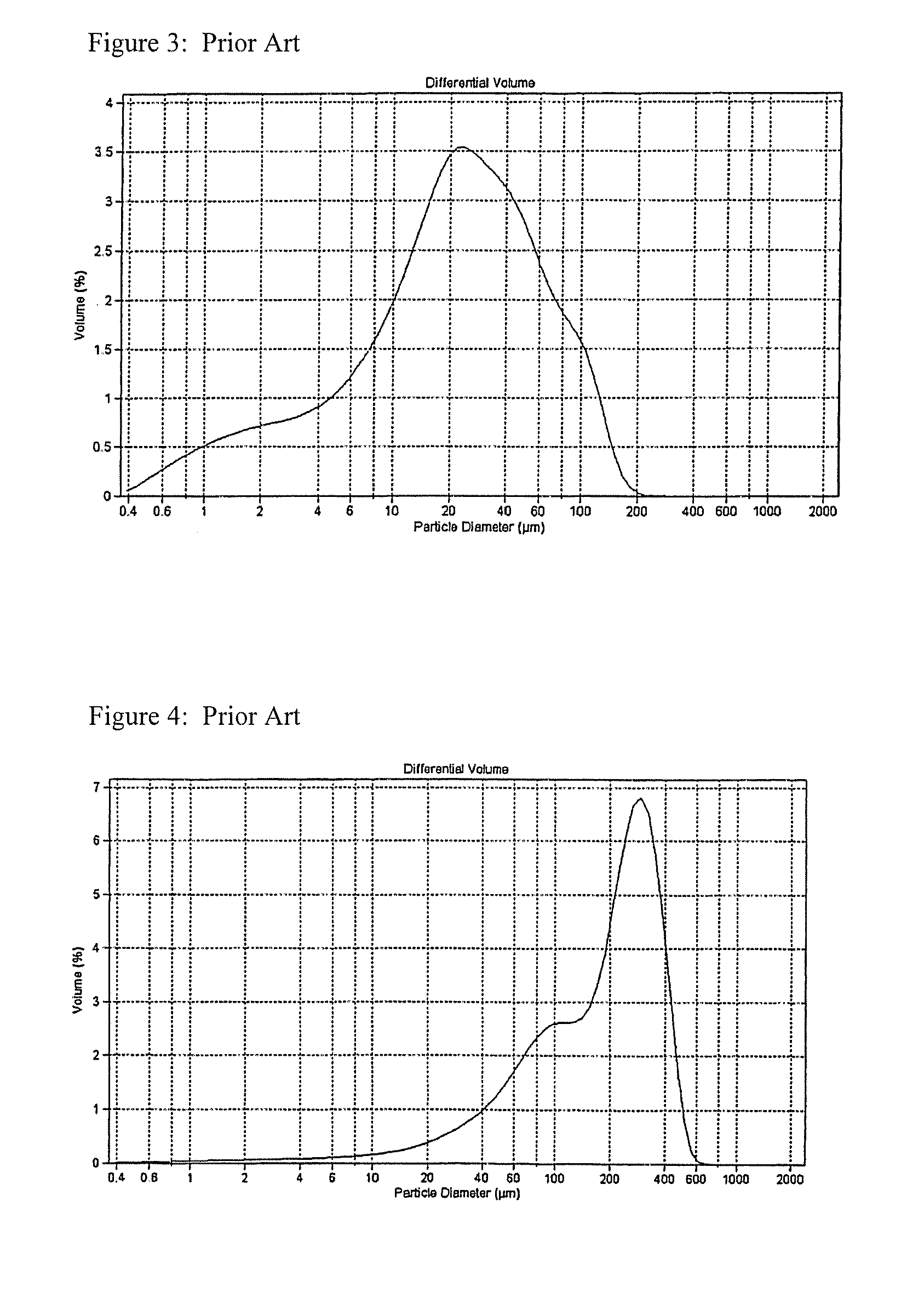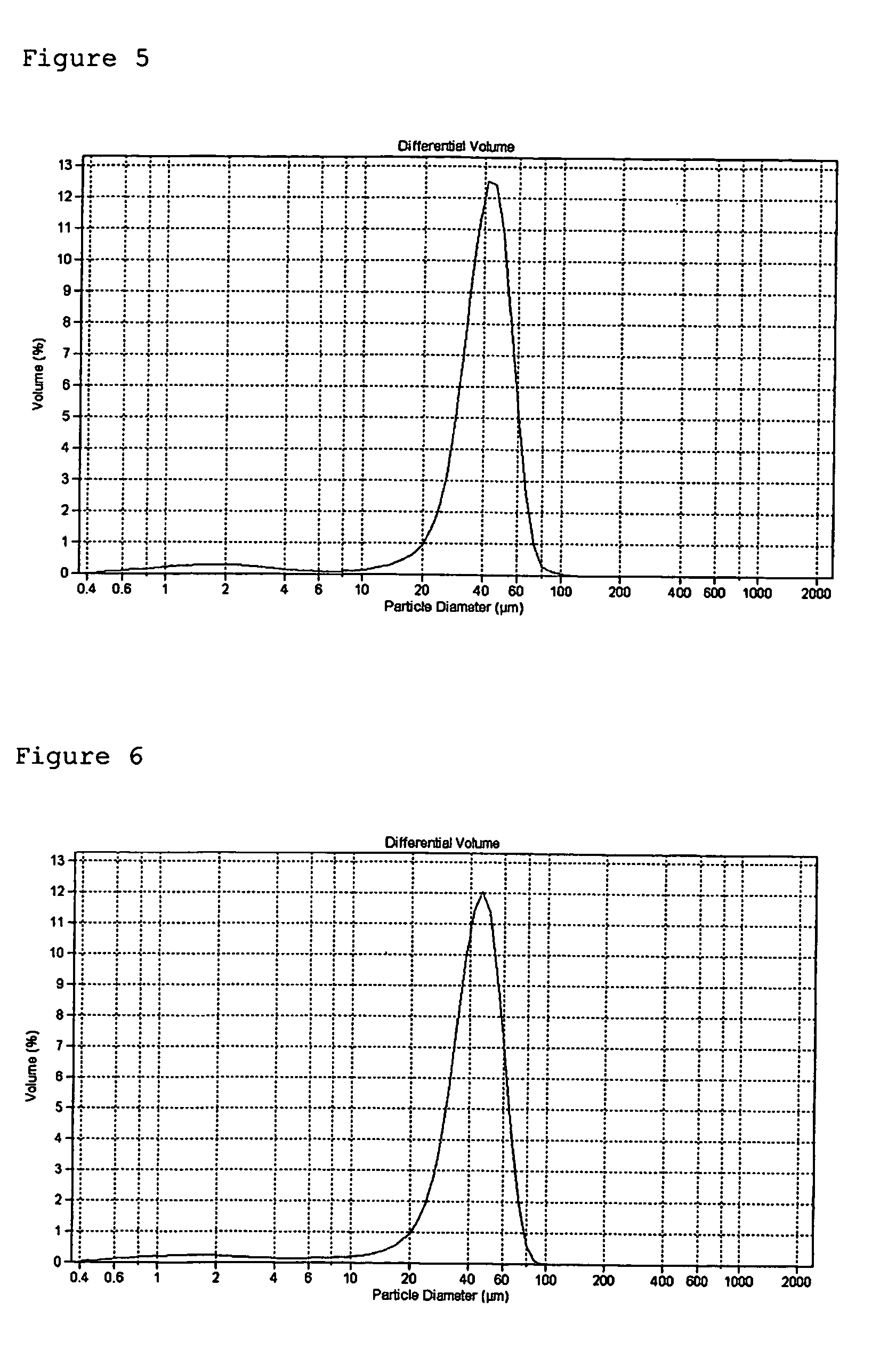Process for preparing an olefin polymerization catalyst component
- Summary
- Abstract
- Description
- Claims
- Application Information
AI Technical Summary
Benefits of technology
Problems solved by technology
Method used
Image
Examples
example 1
Preparation of the Soluble Mg-Complex
[0080]In a 150 1 steel reactor 19,4 kg of 2-ethyl hexanol were added at 20° C. 56,0 kg of a 20% BOMAG A (Tradename) [Mg(Bu)1,5(Oct)0,5] solution in toluene were then slowly added to the well stirred alcohol. The temperature of the mixture was then increased to 60° C., and the reactants were allowed to react for 30 minutes at this temperature.
[0081]After addition of 5.5 kg of 1,2-phthaloyl dichloride, the reaction mixture was stirred at 60° C. for another 30 minutes to ensure complete reaction. 13.8 kg of 1-chloro butane were then added at 60° C., and stirring at this temperature was continued for 30 minutes. After cooling to room temperature a yellow solution was obtained.
Preparation of the Catalyst Component
[0082]100 ml titanium tetrachloride were placed in a 1 l reactor equipped with a mechanical stirrer. After addition of 40.0 ml n-pentane, 157.0 g of the Mg-complex was added to the well-stirred reaction mixture at 25° C. within 4 minute. Afte...
example 5
Preparation of the Catalyst Component (3 mg Polydecene)
[0113]100 ml titanium tetrachloride were placed in a 1 l reactor equipped with a mechanical stirrer. Mixing speed was adjusted to 110 rpm. After addition of 50.0 ml n-heptane, 180.0 ml of the Mg-complex was added to the well-stirred reaction mixture at 25° C. within 10 minute. After addition a dark red emulsion was formed. After addition of the Mg-complex, 1 ml of toluene solution containing 3 mg polydecene was added.
[0114]Then 10 ml of Viscoplex 1-254 was added. 10 min after addition the temperature of the reactor was increased to 90° C. and stirring at this temperature was continued for 30 min.
[0115]After settling and filtering, the solid was washed with 200 ml of toluene at 90° C. for 35 min. Then the washings were continued with two times 150 ml heptane á 10 min. Then the catalyst was taken out from the reactor to separate drying vessel as a slurry with 100 ml of heptane.
[0116]Finally the solid catalyst was dried at 60° C. b...
example 6
Preparation of the Catalyst Component (6 mg Polydecene)
[0122]The catalyst component was prepared as in example 5 except 6 mg polydecene in 2 ml toluene was used.
[0123]The polymerisation was carried out as in example 4.
[0124]
Catalyst compositionTi %Mg %Cl %DOP %Example 62.613.045.625.7
[0125]The catalyst particle size distribution by Coulter is shown in FIG. 6.
[0126]
Polymerisation resultsActivityMFRXSBDkgPP / gCatg / 10 min%g / mlExample 626.34.01.40.43
[0127]
Polymer particle size distribution by sieving% polymer on sieves4 mm2 mm1 mm0.5 mm0.18 mm0.1 mm0.056 mmpan020.865.912.60.6000
PUM
| Property | Measurement | Unit |
|---|---|---|
| Temperature | aaaaa | aaaaa |
| Temperature | aaaaa | aaaaa |
| Temperature | aaaaa | aaaaa |
Abstract
Description
Claims
Application Information
 Login to View More
Login to View More - R&D
- Intellectual Property
- Life Sciences
- Materials
- Tech Scout
- Unparalleled Data Quality
- Higher Quality Content
- 60% Fewer Hallucinations
Browse by: Latest US Patents, China's latest patents, Technical Efficacy Thesaurus, Application Domain, Technology Topic, Popular Technical Reports.
© 2025 PatSnap. All rights reserved.Legal|Privacy policy|Modern Slavery Act Transparency Statement|Sitemap|About US| Contact US: help@patsnap.com



